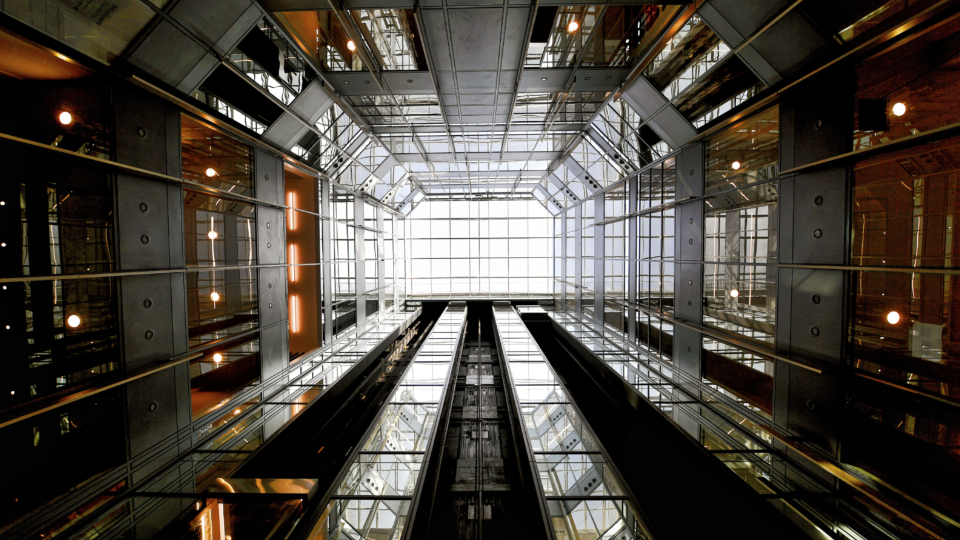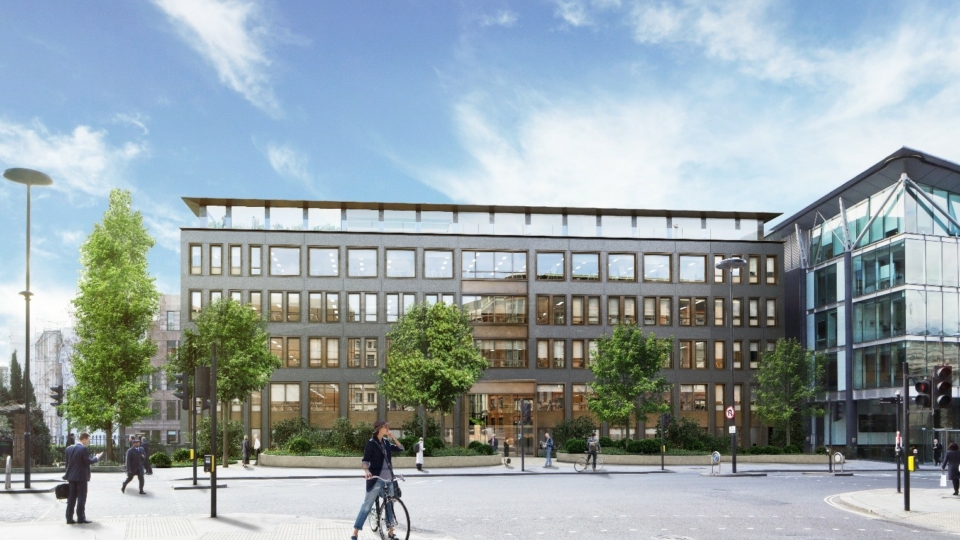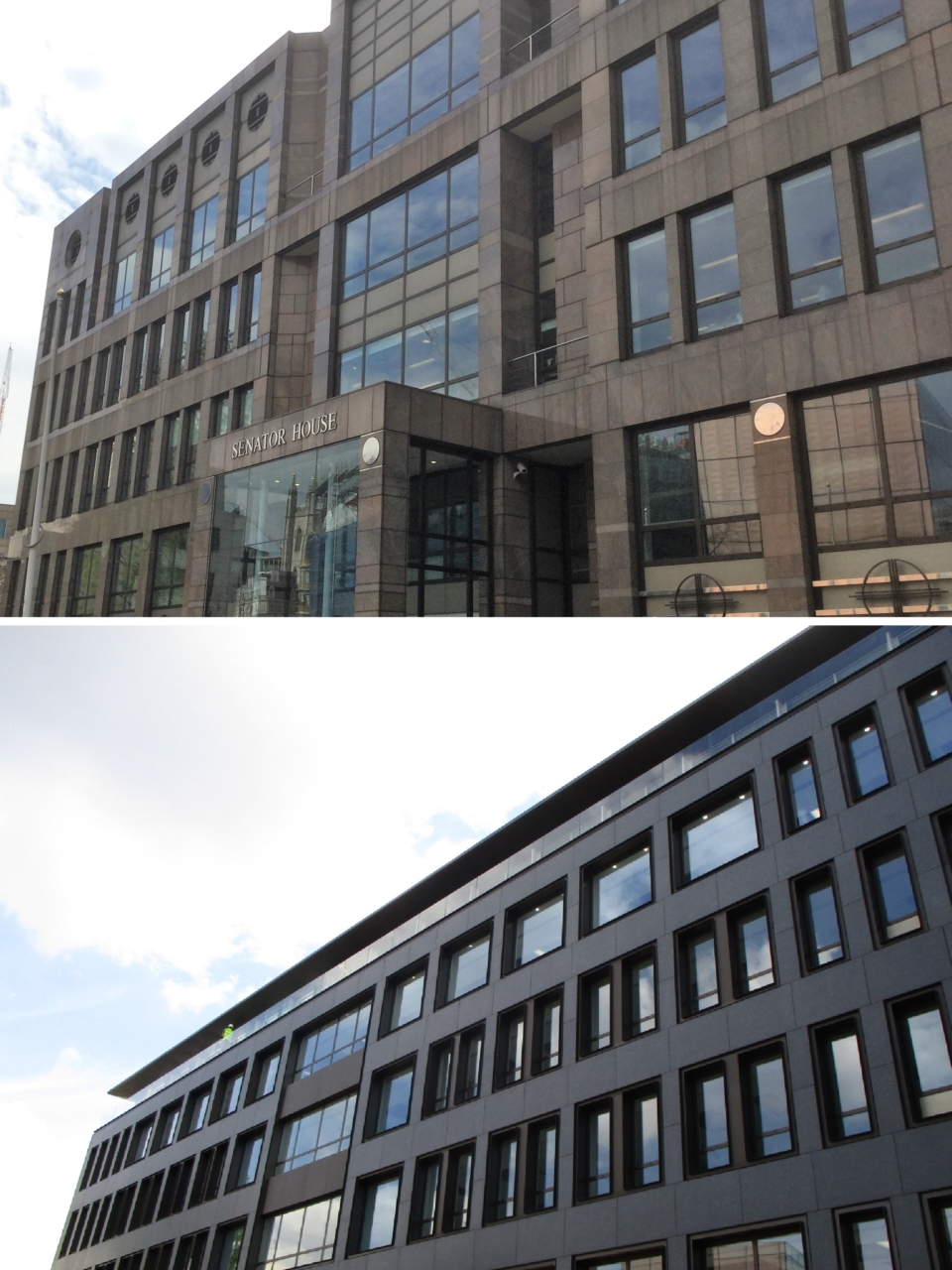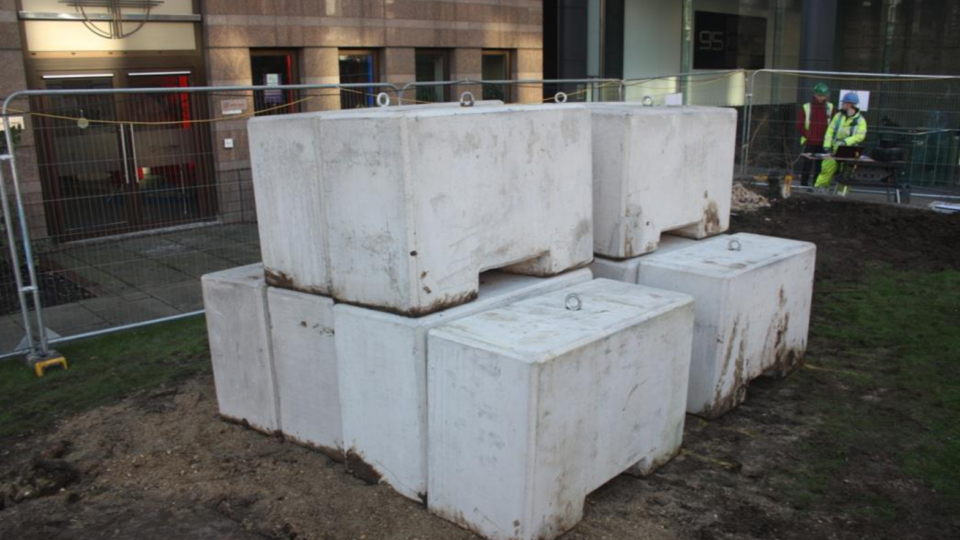Senator House, London
Structural Engineering | Temporary Works Engineering | Structural Health Monitoring | Adaptive Reuse & Refurbishment | Commercial & Industrial | Roads & Highways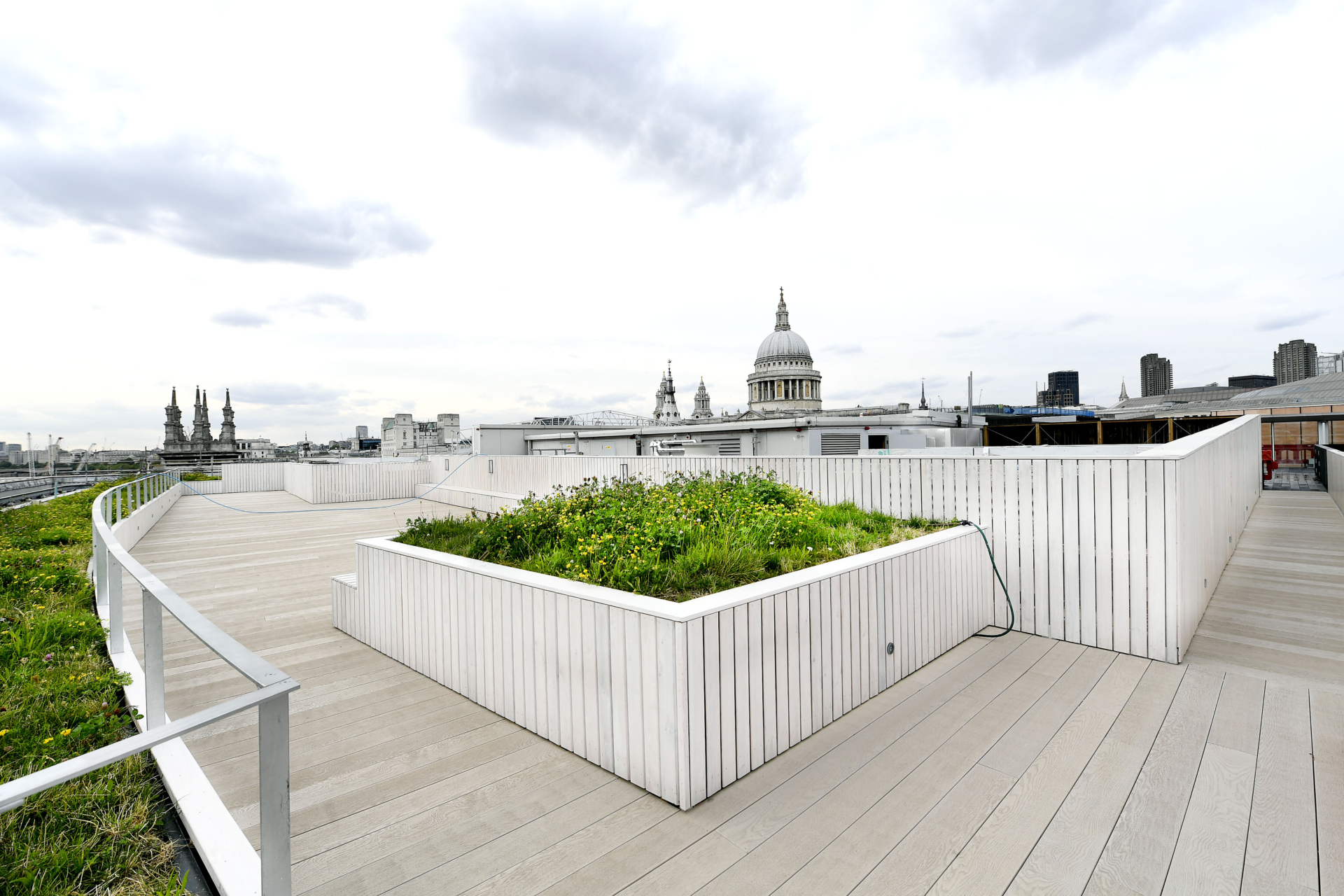
Design ID worked with Graham Construction to create this stunning contemporary Category A office space in the heart of London. Design ID provided the temporary works engineering and specifically the demolition sequencing for the existing façade for the refurbishment of eight floors and the creation of a new external roof level terrace.
To facilitate the construction works a site compound was proposed to be located within an existing landscaped area to the front of the building. GRAHAM Construction wished to utilise this area for HGV deliveries and construction plant, as well as temporary access scaffolding. Access around perimeter of the building was very constrained, and the landscaped area served as the only feasible compound location to facilitate the works. However, site surveys revealed underground chambers beneath, owned by London Underground, with uncertainty regarding their structural capacity to support the proposed construction loading during works. Design ID carried out structural assessments to modern codes and standards, which indicated that these structures did not have the required structural capacity to support the proposed loading. The conventional solution would have been to erect temporary works to support the underground chambers; but this was considered impractical and unfeasible in the confined spaces above the London Underground structures and would have halted the project.
Design ID worked in partnership with McFarland Consulting to devise a solution that involved Structural Health Monitoring (SHM), via the installation of Fibre Bragg Grating (FBG) strain monitoring equipment; undertaking load tests to simulate predicted loading conditions. Design ID produced a Finite Element Analysis (FEA) model of the structures alongside this, that was used to predict the strains experienced by the chamber structures when subjected to construction loads. The outputs of the model were then compared to data obtained during load testing. The results revealed that, contrary to traditional assessments, the landscaped area could receive the intended loading and thus, the installation of FBGs eliminated the need for temporary works. This helped in reducing cost, project time and ultimately ensured the successful delivery of the project. Combined Strain and Visual Monitoring via camera technology continued throughout the construction process, serving as a Health & Safety Management System to protect site workers and neighbouring assets.
Client: Graham Construction
Value: £21.8m
